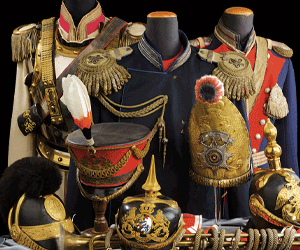Diplomatic Corps Diplomat Waistcoat
SKU: 34.GOR.02.01.02.002
Estimated market value:



Estimated market value:
Attributes
History
The Diplomatic Corps was made up of officials (civil servants) of the Foreign Ministry. This ministry was taken over in 1938 by newly appointed Foreign Minister Joachim von Ribbentrop who, for the first time, introduced specific Diplomatic Corps uniforms. Prior to 1938, there had been no defined uniforms for members of the Foreign Office.
Prior to the war, the Foreign Ministry was heavily involved in the annexation of Austria and the Sudetenland. During the war, some conquered territory, especially in Poland, was incorporated into the German Reich, while other territory was merely occupied. These countries, while officially still independent, were in reality administered by German officials of the Diplomatic Corps, and in some cases also German-approved puppet governments.
It is important to remember that the officials who served within the borders of the German Reich weren’t of course part of the Foreign Ministry, but rather of the Ministry of the Interior. However, the officials of both these ministries wore nearly identical uniforms.
Officials of the Diplomatic Corps were distinguished by rank as well as their educational level. The latter determined which kind of “Laufbahn” (career) an individual was able to choose. The “Höherer Dienst” (Higher Career) required a university degree, the “Gehobener Dienst” (Elevated Career) required a college degree, the “Mittlerer Dienst” (Middle Career) required a highschool degree, and the “Einfacher Dienst” (Lower Career) required a grade school education, to put it in a simplified way. Additionally, the Higher and Elevated Careers included several different pay groups.
Uniforms for the Diplomatic Corps were first introduced in 1938. They underwent near continuous modification between then and 1943.
The first uniforms specifically designed for members of the Diplomatic Corps were made for Hitler’s state visit to Rome in May of 1938. These uniforms were only worn by those members of the Diplomatic Corps who were part of his entourage during the visit. They were not worn again after this occasion.
New Diplomatic uniforms were introduced after the Rome visit in June of 1938. They were made of black instead of midnight blue garments. The cuff and collar piping was eliminated, as well as breast/sleeve eagles and pay group sleeve stripes.
The waistcoat is double-breasted with three buttons on each side. It features an embroidered oak leaf and acorn pattern beginning with the highest button and reaching all the way up to the collar. There are two buttons at the rear and four buttons at the lower end of each sleeve.
Initially, the waistcoat featured ornate sew-in shoulder straps depicting a sprig of oak leaves and acorns with an eagle emblem at the top. At some point in late 1938, this sew-in pattern was replaced by regular shoulder boards, and eventually, these were discontinued in March of 1940 as well.


Comments
Sign in to comment and reply.


Scroll Top